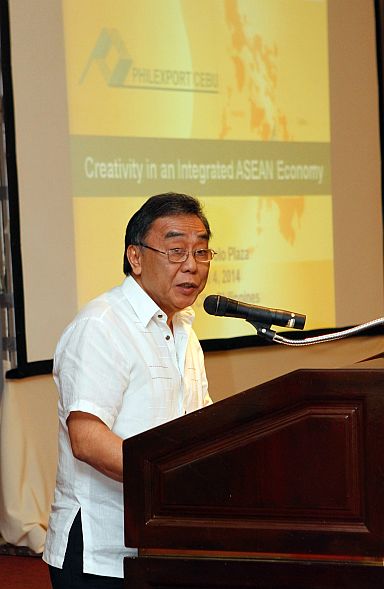Cebu exporters look for new markets in free trade areas

Philexport Cebu executive director Federico Escalona. (CDN FILE PHOTO)
Cebu exporters are moving towards neighboring markets, rather than focus on the traditional export markets of Japan, US and Europe.
“We hardly actually trade with our neighbors but now we’re trying to move toward the free trade areas in the region,” said Philexport Cebu executive director Federico Escalona.
The establishment of the Asean Economic Community, which aims to create a single market, will help Philippine exporters penetrate more markets, he added.
Escalona said he believed that major exports will continue to be furniture, fashion accessories and processed food.
He said, however, that exporters are hindered by the centralized processing of some documents in some government agencies.
“They (agencies) aren’t customer oriented. They should be where they are nearest to the customer, not wait for the customer to go to them,” he added.
Proposals from the various export groups for regional offices to be given power to approve documents have been “ignored” by the government, said Philexport Cebu chairman Apolinar Suarez, Jr.
“I call it deadma. There’s no feedback from them,” he said.
Under the Philippine Export Development Plan, exporters are also pushing for the creation of a National Quality Infrastructure (NQI) agency, which will review laws and regulations in relation to export.
Strategies and plans to help the export sector achieve its targets for 2016 will be discussed during an EDC meeting on March 18, Suarez said.
Government agencies involved with export are also expected to present an updated set of policies and programs in line with the PEDP Strategies for 2015-2017. The PEDP 2015-2017 was approved and signed on February 4, 2016.
Bangko Sentral ng Pilipinas (BSP) deputy governor Diwa Guinigundo earlier said the export sector is expected to grow by 5 to 8 percent in 2016 and 2017, respectively.
Specific targets for Central Visayas have yet to be released, said Escalona.
“It would be easy to reach the targeted increase. There’s no question because we’re coming from very low exports end of last year,” he said.
Suarez said he expected the food and agriculture sectors to “boom” this year, especially with several “unexpected entries” into other markets.
“Last year, banana exports opened in China. Biglang nakapasok rin ang banana sa Australia (Philippine bananas were suddenly able to penetrate Australia),” he said.
These unexpected entries help cushion the impact of some external shocks such as the elections in the US, the civil unrest in some parts of the Middle East, and the slowdown in China and Japan.
The Department of Trade and Industry has also been heavily pushing the export of cacao and coffee, which Suarez said can be “big ticket items” for export.
At present, coffee and cacao exporters are still studying which international markets will have the greatest demand for the products, he added.
Disclaimer: The comments uploaded on this site do not necessarily represent or reflect the views of management and owner of Cebudailynews. We reserve the right to exclude comments that we deem to be inconsistent with our editorial standards.




